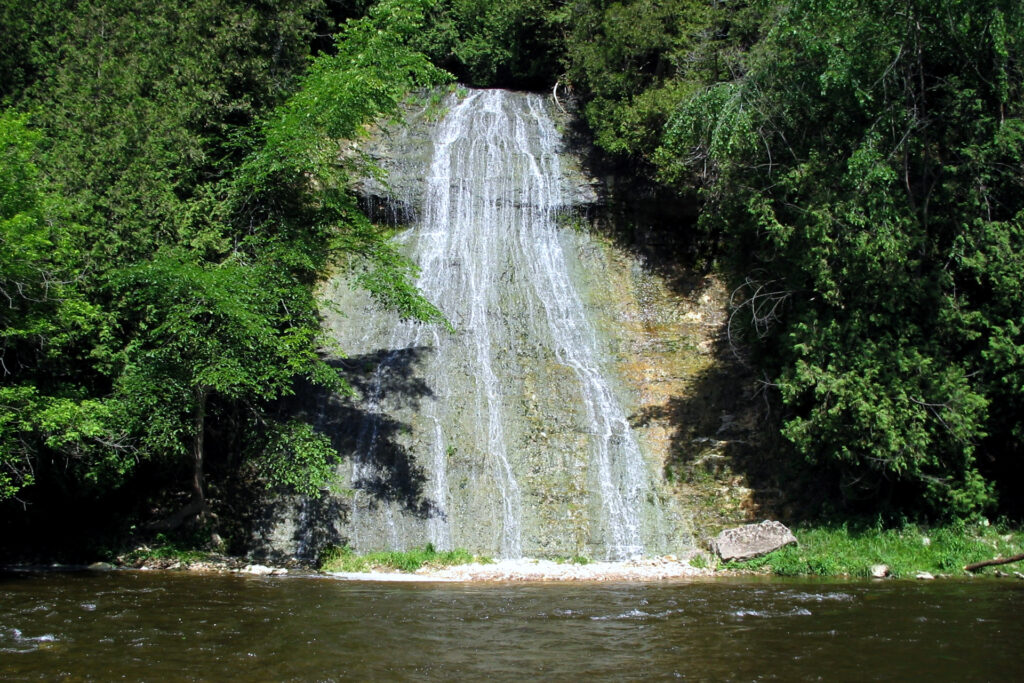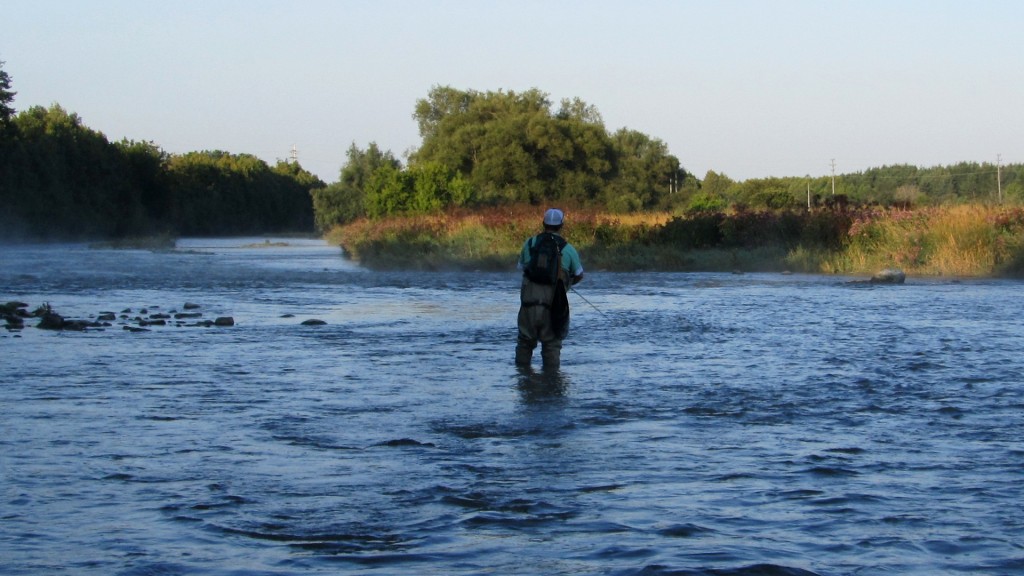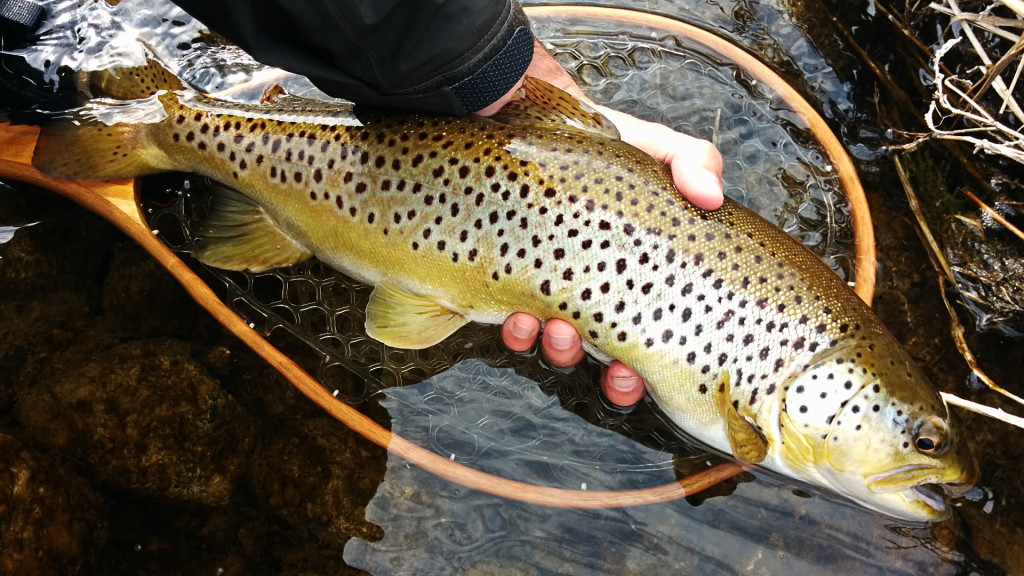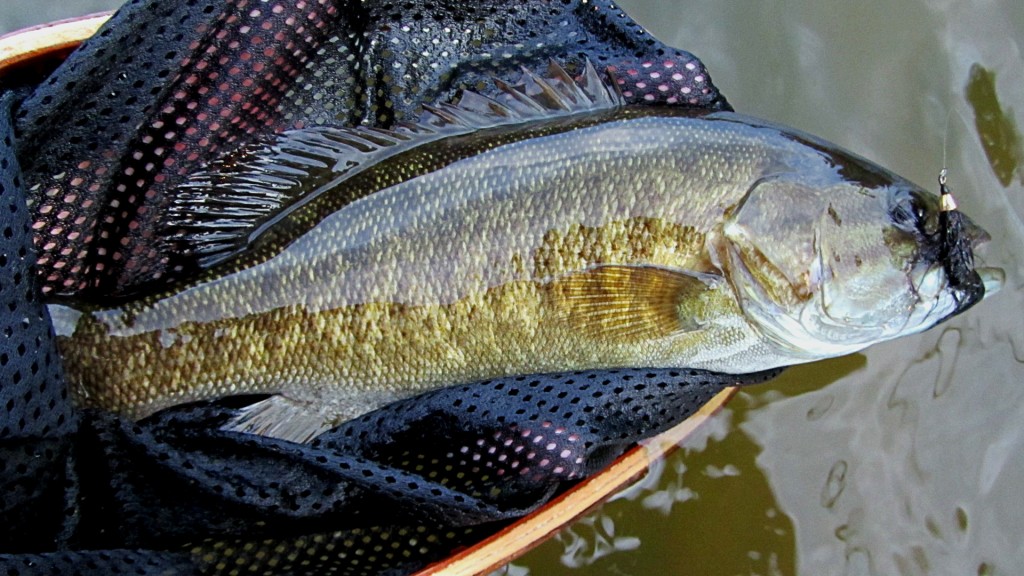The Grand River is a large, diverse river system that flows from its headwaters near Dundalk Ontario, eventually emptying into Lake Erie in the town of Port Maitland.
The Grand is probably best known for its special regulations Brown Trout fishery from the town of Fergus (near Belwood Lake) to downstream between Elora and West Montrose. However, the Grand also offers some of the best Smallmouth Bass fishing in the province and even has a second unique special regulations section (catch and release only) on the middle Grand between Brantford and Paris.
Where My Fly Fishing Roots Began
The Grand flows through the scenic Elora Gorge, which is where my fly fishing addiction started back in the 1990’s. It was there, while camping with my then girlfriend (now wife), that I stumbled onto fly fishing while attempting (and failing miserably) to catch rising trout with spinning gear.

Growing up near Windsor, Ontario, which is completely devoid of trout and flowing rivers, I knew nothing of fly fishing at the time. So, there I sat on the banks of the Grand within the gorge, debating how on earth I could fish to these rising trout with my heavy/sinking conventional tackle.
While searching through my tackle box, I came across a single old fly (I think it was an Adams) that my cousin had given me many years before. It was about the only thing in my box that looked like it would float, so I tied it to the end of my 10lb monofilament and attached a bobber a couple feet up from it for added weight, to aid in casting.
It took only a single cast with that franken-setup to watch a brown leap out of the water for the fly and hook my first ever trout. With that single moment, plus a little help from the recently released A River Runs Through It, my long journey of fly fishing addiction started.
Upper River: Blue Ribbon Tailwater

Easily the most popular fly fishing destination in Ontario for resident trout, this special regulations tailwater begins just downstream of where it empties out of the Shand Dam in Belwood Lake and continues downstream to a point between the towns of Elora and West Montrose.
This section is a stocked Brown Trout fishery, but make no mistake, these fish grow big. Each year trout in the 25″+ range are caught and released. For this reason, the Grand is suitable for both the beginner angler (for catching the younger stocked fish), as well as the most experienced anglers. The older trout quickly become wise as they have to deal with not only a healthy amount of fishing pressure, but also with the large number of predators on the river.
The Grand was not always a productive trout fishery though. Prior to the creation of the Shand Dam in the mid 1900’s, the river was not suitable for trout. With the new cold water discharge from the dam, some limited stocking experiments took place for many years, until eventually the Brown Trout program that exists today was introduced in 1989. The tailwater is very nutrient dense with a large variety of insect life – and as a result, the browns grow fast and large here.

River access is very good, so although the river does get a lot of traffic, there is plenty of good water to fish. There’s also a fly shop conveniently located on the banks of the river in Fergus.
Early season (and again late season) is the best fishing, as warmer temperatures can result in increased mortality rates when catching and releasing trout in the heat of summer.
Although the upper river is best known as a Brown Trout fishery, there are a number of other species present that may be caught and even targeted at times. This mainly includes Walleye and some very large Suckers, although one may also run into the occasional Smallmouth bass. Smallmouth can also be targeted to a limited extent in the uppermost sections of river, upstream of Belwood Lake, where the river is too warm to support trout. Due to the shallower water and smaller populations of fish however, it’s best to travel further downstream (below the trout section) to target warm water species.
Middle River: Smallmouth Bass Factory
As the river warms closer to West Montrose, the Brown Trout give way to mainly Smallmouth Bass. From this point all the way down to Lake Erie, Smallmouth can be found.
The middle Grand also has some sources of cold water from tributaries and upwellings that create water conditions capable of supporting some resident trout as well, so it’s entirely possible to hook into Smallmouth, Brown Trout and Rainbow trout on the same section of water in certain locations. Steelhead can also make it all the way up from Lake Erie to the middle section of the river.
There is a second special regulations section of river between Brantford and Paris, where all bass and trout must be released. This is a rare occurrence in Ontario (catch and release Smallmouth) and has produced an excellent fishery as a result. Multiple species can be caught in section, including Smallmouth and occasionally Rainbow and Brown Trout – though Smallmouth is the primary species of target here.

Lower River: Mixed Bag and Migratories
As the river continues to flow downstream, it increases in both size and volume and is home to all manner of both warm and cold water species. Monster smallmouth can continue to be caught in the lower section, but it’s probably better known for its fantastic Steelhead fishing. Due to the size of the lower river, it’s best fished with a drift or pontoon boat and with longer spey or switch style rods.



